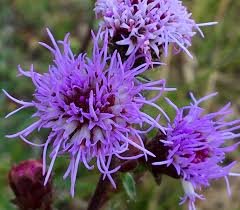Nature knows best
A native wildflower Garden
by Quilda Pires
This garden features native wildflowers that support local pollinators and restore natural biodiversity. Planted with species native to this region, this space is designed to bloom from spring through fall. Every plant here plays a role in supporting bees, butterflies, and other wildlife that rely on native habitats.

Featured Plants
Back (6-7 plants)
New England blazing star ( 2-4ft)
Could have 3-4 plants that are 18 inches apart from each other
Butterflyweed (1.5-3ft)
Could have 3 plants that are 18-24 inches from each other
Planting Plan
Middle (5-6 plants)
Wild lupine (1-2ft)
Could have 3 that are 12-18 inches apart
Slender bush clover (1-3ft)
Could have 2-3 plants that are 18-24 inches apart
Front (10-12 plants)
Smooth yellow violet (4-10 inches)
Could have 10-12 plants that are about 6-12 inches apart
About the Plants
Specs
Size: 5 ft x 10 ft
Sun: Full sun to partial shade
Soil: Well-drained, moderately rich soil
Watering: Weekly during establishment; drought-tolerant once mature
Why Native Plants?
Many bees provision their nests with pollen from native plants, and butterflies and moths eat native species at the larval stage. Birds, in turn, feed an abundance of these caterpillars to their young. Going native supports this whole food web.
Slender Bush-Clover
Lespedeza virginica
-
Thrives in dry, poor soil
No compost or fertilizer needed
Rake away weeds and lightly loosen soil
-
Seeds: Sow outdoors in October or early April
-
Scarify, soak in water overnight, then cold stratify 30 days
-
Full sun
Water only when very dry
This is a tough and low-maintenance plant that supports native insects
New England Blazing Star
Liatris novae-angliae
-
Needs sandy, well-draining soil as water being able to drain properly can cause rot in the root.
Mix coarse sand and compost into soil
Loosen the top 6 to 8 inches to help roots spread
Prefers a neutral to slightly acidic ph of soil
-
Seeds: Sow outdoors in October–November or start indoors in January–February
Transplants: Plant in April–May or September
-
Cold stratify in moist sand/paper towel for 6–8 weeks in the fridge
-
Needs full sun
Water regularly for the first 6 to 8 weeks, then water less after
Deadhead flowers to prolong blooming or leave seed heads for birds
Smooth Yellow Violet
Viola pubescens
-
Needs moist, rich soil like forest floors
Mix leaf mulch or compost into planting area
Keep soil loose and damp
-
Seeds: Sow outdoors in October for natural cold exposure
Transplants: Best in April or September
-
Cold stratify in damp paper towel in the dark for 8–12 weeks
-
Shade to partial shade
Keep soil evenly moist
Mulch with leaves to protect roots and keep moisture in
Butterfly Weed
Asclepias tuberosa
-
Likes sandy, well-drained, dry soils
Do not enrich with compost or manure
Break up compact soil and mix in sand if needed
Prefers neutral to slightly acidic ph of soil
-
Seeds: Sow outdoors in October or cold stratify and plant indoors in February
Transplants: Plant outdoors in May–June
-
Cold stratify for 30–60 days
-
Full sun all day
Water weekly during the first growing season
Deep taproot, do not move after establishing
Wild Lupine
Lupinus perennis
-
Prefers sandy, slightly acidic soil
Remove weeds and loosen soil 6 to 8 inches deep
Add pine needles or peat moss for acidity if it's needed
-
Seeds: Sow outdoors in October–early November, or early April
-
Scarify (lightly scratch coat with sandpaper), soak overnight
Cold stratify for 6–8 weeks
-
Sun or partial shade
Doesn’t need rich soil
How to stratify seeds
(simple steps)
Mix seeds with moist sand or paper towel – Slightly damp, not soaking wet.
Put in a sealed container or plastic bag – Label it with the plant name.
Refrigerate for 30–90 days – This mimics winter.
Plant seeds in spring – Once the time is right, plant them outdoors.







